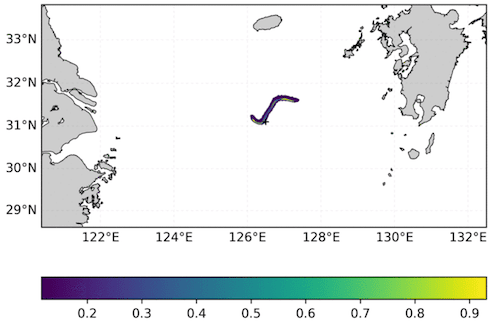
LAST UPDATE: Thu, Jan. 18th, 2018, h. 18.00
* This bulletin is provided by the CMCC Foundation and Alma Mater Studiorum University of Bologna (UNIBO) in the framework of their scientific and operational activities. CMCC and UNIBO develop oil pollution downstream services in order to support decision making based upon the most advanced monitoring system of ocean currents provided by the Copernicus Marine Environment Monitoring Service.
DISCLAIMER
“The information and views set out in this Bulletin are those of the authors (CMCC and UNIBO) and do not necessarily reflect the official opinion of the governments of the area. CMCC and UNIBO do not guarantee the accuracy of the data included in this study. Neither the CMCC-UNIBO nor any person acting on the author’s behalf may be held responsible for the use which may be made of the information contained therein.”
On the January 6, 2018 two vessels collided off Xangai, China. The stricken Iranian tanker Sanchi carried 136,000 tonnes of “gas condensate”, a very light, volatile and explosive oil type. The exact location of the spill, its duration, spilled volume and density of the condensate are currently unknown. After one week, the vessel ended up sinking in the East China Sea with an unknown amount of bunker oil inside.
The present bulletin presents the average surface currents and drift due to ocean waves (i.e. Stokes drift) for the forecasted period between the 06/01 and 22/01/2018, and the oil spill trajectory in the period of interest. The winds are from the NOAA NCEP GFS weather forecasts and the currents from the Global Ocean CMEMS forecasts.


